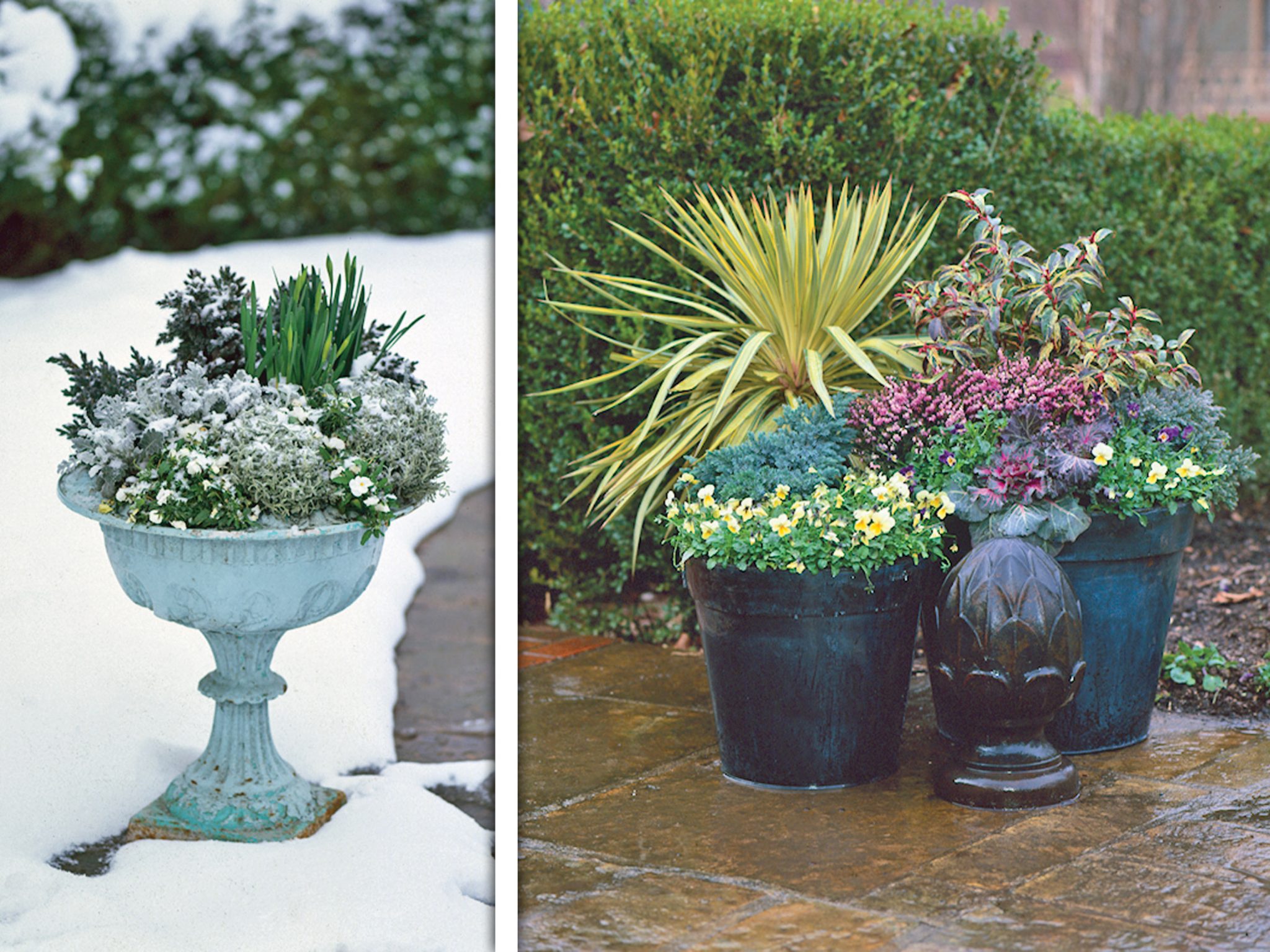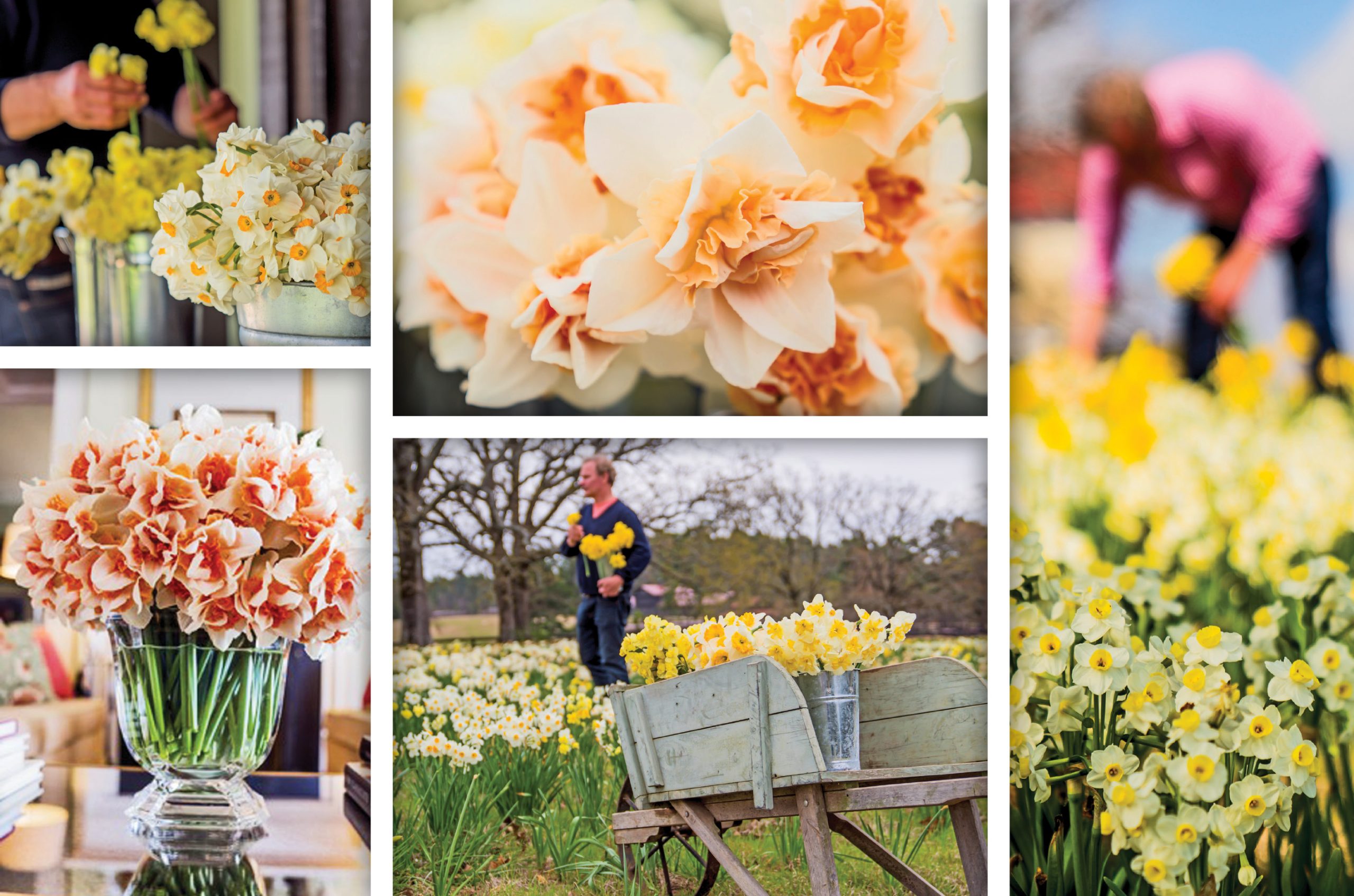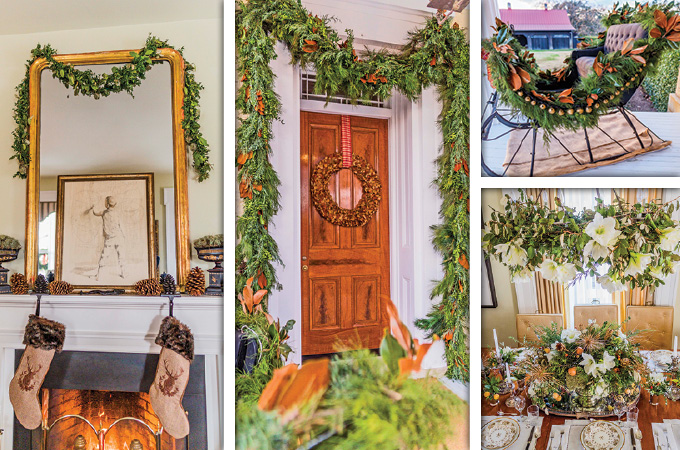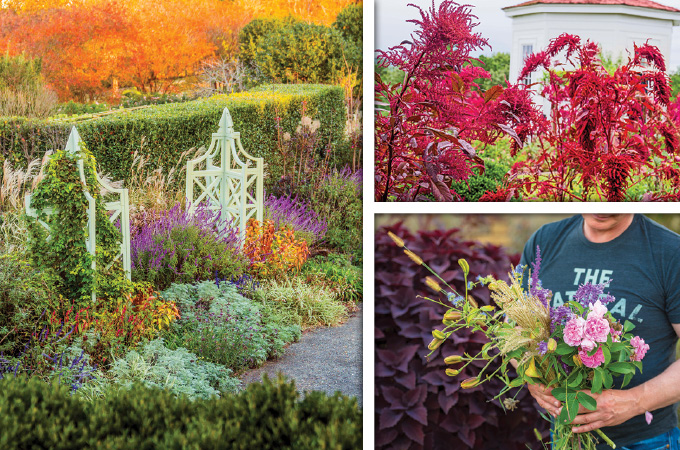I’ve always loved container gardening. It’s a sign that spring has arrived when I get to use colorful annuals like coleus and petunias to create ‘art’ for my porch, garden walkways and even vegetable garden. But should container gardening be limited to warm weather months? It doesn’t have to be. With a little preparation, you can design and enjoy cool- and cold-weather containers.
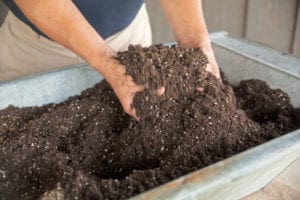 Start by choosing the right container; bigger is better. You want plenty of potting soil between the interior pot wall and the plant’s roots. This provides a layer of insulation for those tender roots. You also want a pot that has drainage holes to allow water to escape so your plants don’t become waterlogged. Make sure your container is a durable, all-weather material like heavy or double-walled plastic, foam, fiberglass, metal or wood. Containers made of ceramic, terra cotta and concrete are at risk for cracking as water freezes and expands. I also don’t recommend gardening in winter with any heirloom or sentimental containers.
Start by choosing the right container; bigger is better. You want plenty of potting soil between the interior pot wall and the plant’s roots. This provides a layer of insulation for those tender roots. You also want a pot that has drainage holes to allow water to escape so your plants don’t become waterlogged. Make sure your container is a durable, all-weather material like heavy or double-walled plastic, foam, fiberglass, metal or wood. Containers made of ceramic, terra cotta and concrete are at risk for cracking as water freezes and expands. I also don’t recommend gardening in winter with any heirloom or sentimental containers.
One clever way of adding a layer of protection to your containers—and plants—is to wrap pots in bubble wrap or sheets of styrofoam. Get around this ingenious but tacky-looking solution by layering the material inside the pot, or wrap the exterior of the pot with a decorative, seasonal material like burlap. If you leave the bubble wrap or Styrofoam exposed, you are at risk of having your neighbors report you to the garden police.
Next, use a good quality potting soil—never garden soil. Potting soil is the perfect growing medium, ensuring that plant roots don’t get soggy.
Most importantly, have fun selecting plants! For winter container gardening, I almost exclusively use perennial plants and shrubs. They can be beautiful and tough, and you can either repot in the spring or move them to your garden. The rule of thumb is to select plants that are two zones hardier than your current plant zone.
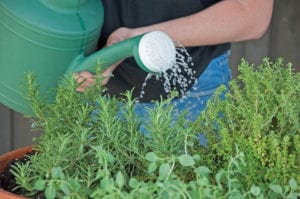 A favorite combination is to start with an evergreen like a pyramidal ‘Green Mountain’ boxwood (zone 4-9), and add coral bells like the yellow-leaved Heuchera ‘Citronelle’ or the stunning ‘Palace Purple’ (both zones 4-9). I like to work in some low-growing, evergreen creeping phlox to fill in any spaces where potting soil is exposed, and top off the display with yellow, purple or rose-colored winter ice pansies (zone 7).
A favorite combination is to start with an evergreen like a pyramidal ‘Green Mountain’ boxwood (zone 4-9), and add coral bells like the yellow-leaved Heuchera ‘Citronelle’ or the stunning ‘Palace Purple’ (both zones 4-9). I like to work in some low-growing, evergreen creeping phlox to fill in any spaces where potting soil is exposed, and top off the display with yellow, purple or rose-colored winter ice pansies (zone 7).
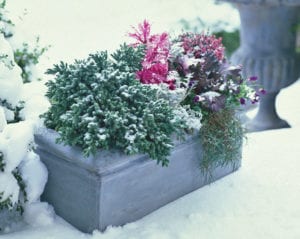 I also appreciate the beauty of red twig dogwoods in winter container displays. The stark red branches are spectacular with a dusting of snow. Another shrub favorite is winterberry holly (Ilex ‘Red Sprite’). I enjoy the ornamental red berries, and at some point in the winter, the birds will, too. Other hardy perennials include ornamental grasses, evergreen Christmas fern, variegated lilyturf, Pigsqueak and Dianthus ‘Firewitch.’ Evergreen trees and shrubs will benefit from an anti-desiccant spray to prevent their leaves and needles from drying out. During the holidays, I like to fill containers with cut holly, magnolia and red berries. The moist soil in containers helps keep the cut boughs hydrated.
I also appreciate the beauty of red twig dogwoods in winter container displays. The stark red branches are spectacular with a dusting of snow. Another shrub favorite is winterberry holly (Ilex ‘Red Sprite’). I enjoy the ornamental red berries, and at some point in the winter, the birds will, too. Other hardy perennials include ornamental grasses, evergreen Christmas fern, variegated lilyturf, Pigsqueak and Dianthus ‘Firewitch.’ Evergreen trees and shrubs will benefit from an anti-desiccant spray to prevent their leaves and needles from drying out. During the holidays, I like to fill containers with cut holly, magnolia and red berries. The moist soil in containers helps keep the cut boughs hydrated.
Watering your containers in the winter is just as important as it is in warm weather. I check my winter containers once or twice a week and really drench them when they’re dry. I take a break from watering once the potting soil is frozen.
As I clean out my containers and compost what’s left of my summer annuals, I won’t feel any pangs that my container gardening season is over. I get to breathe new life into these displays for the coming winter and extend their beauty with year-round enjoyment—and you can, too.
P. Allen Smith is an author, conservationist and TV host of Garden Home on PBS and Garden Style (check your local listings). He uses his Arkansas home, Moss Mountain Farm, to promote the local-food movement, organic gardening and the preservation of heritage poultry. For tours of the farm, visit pallensmith.com/tours.





